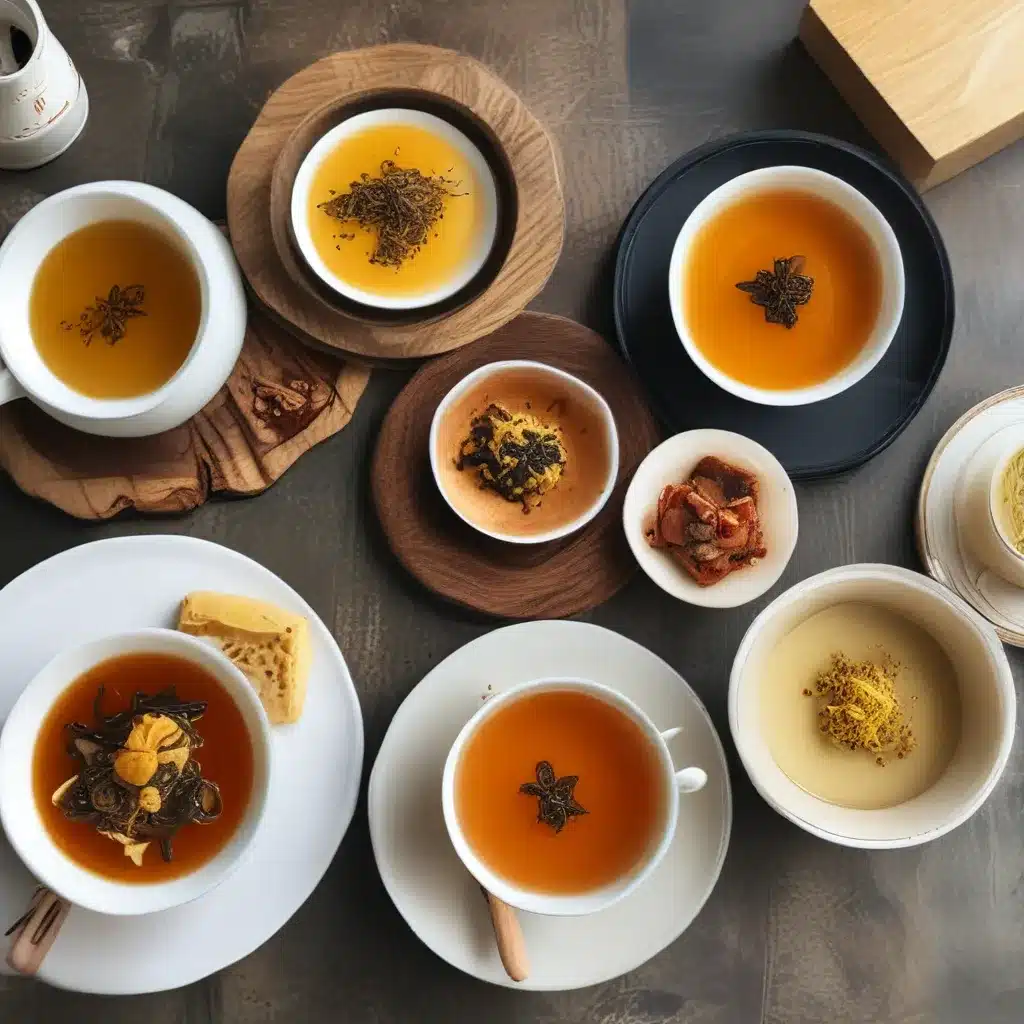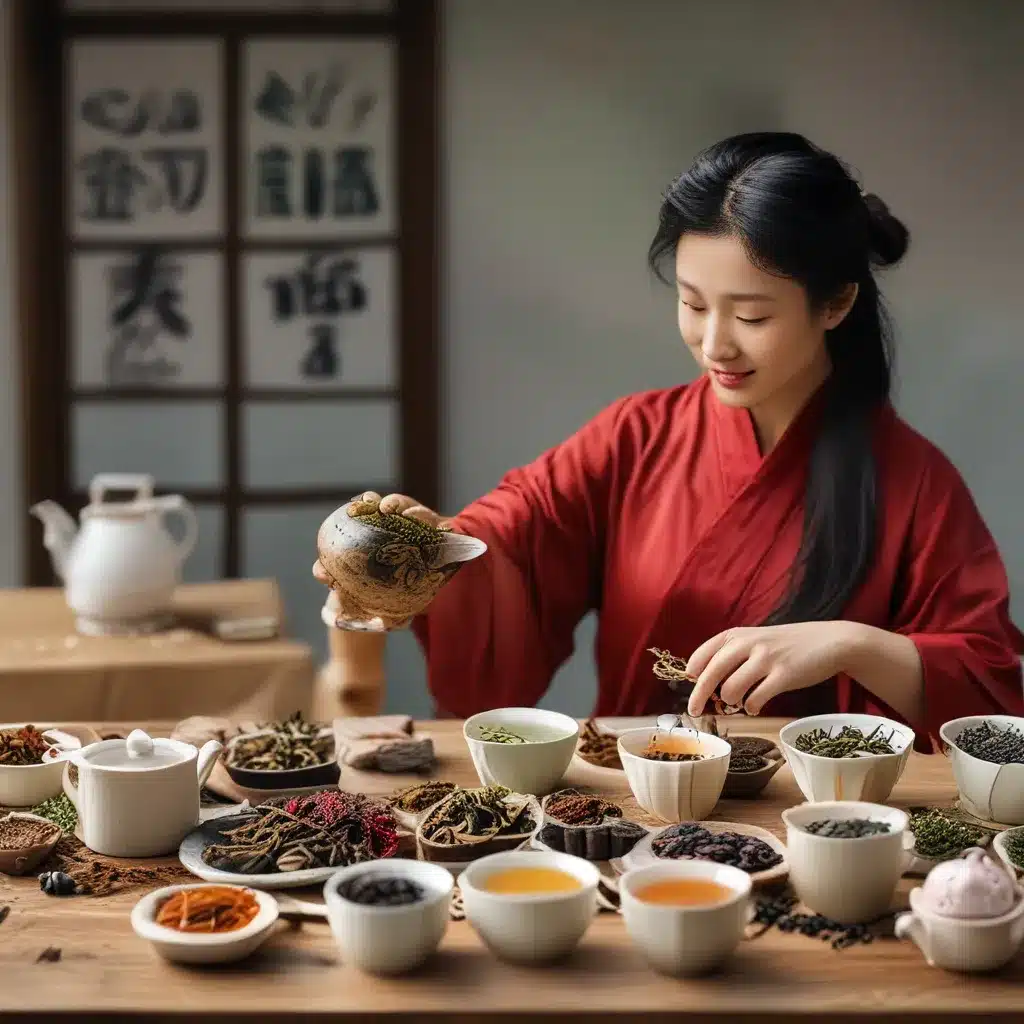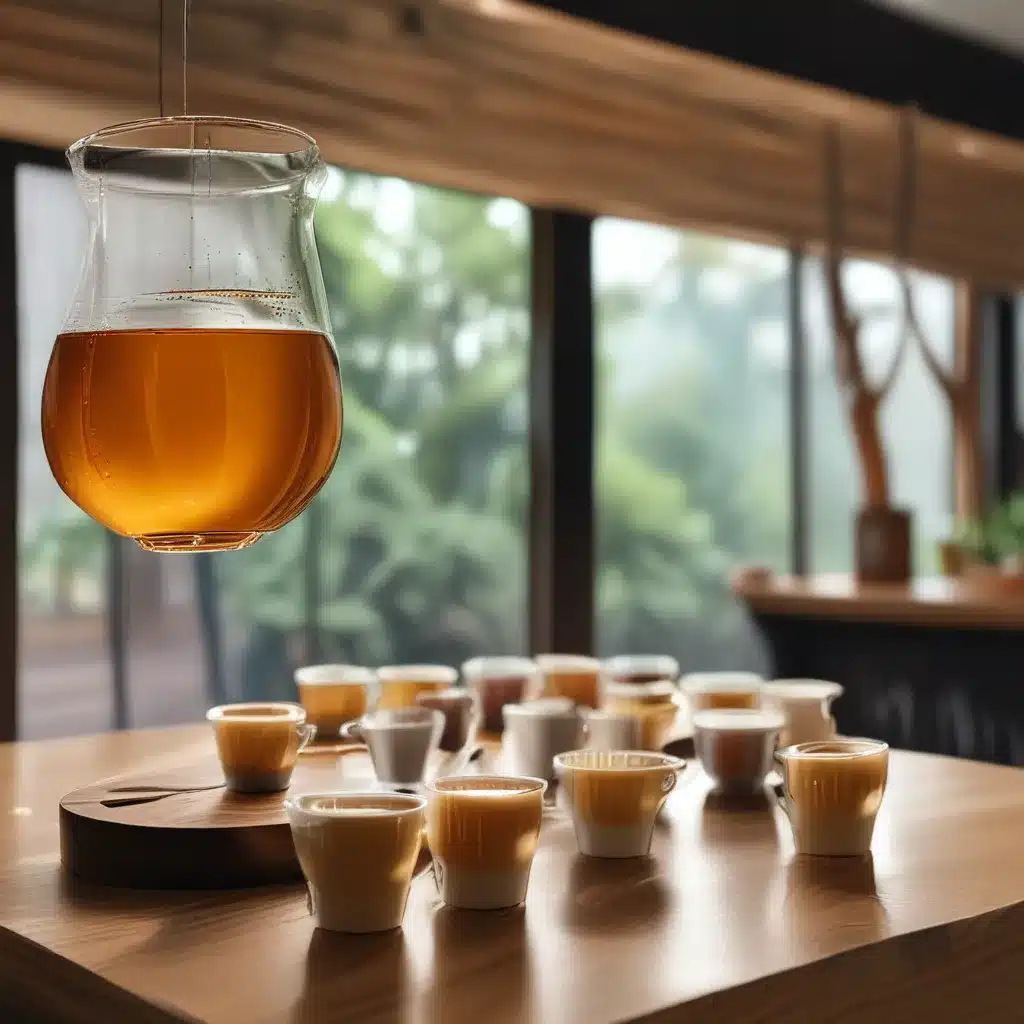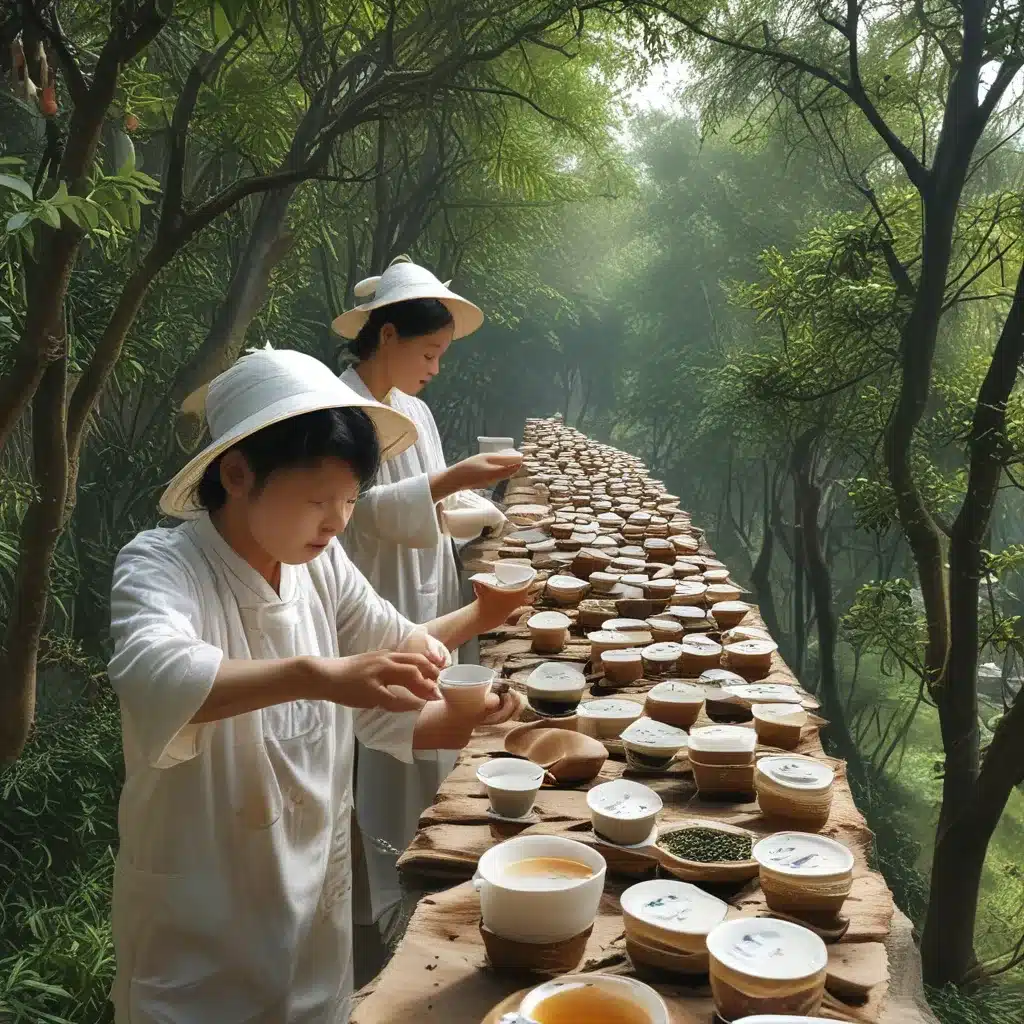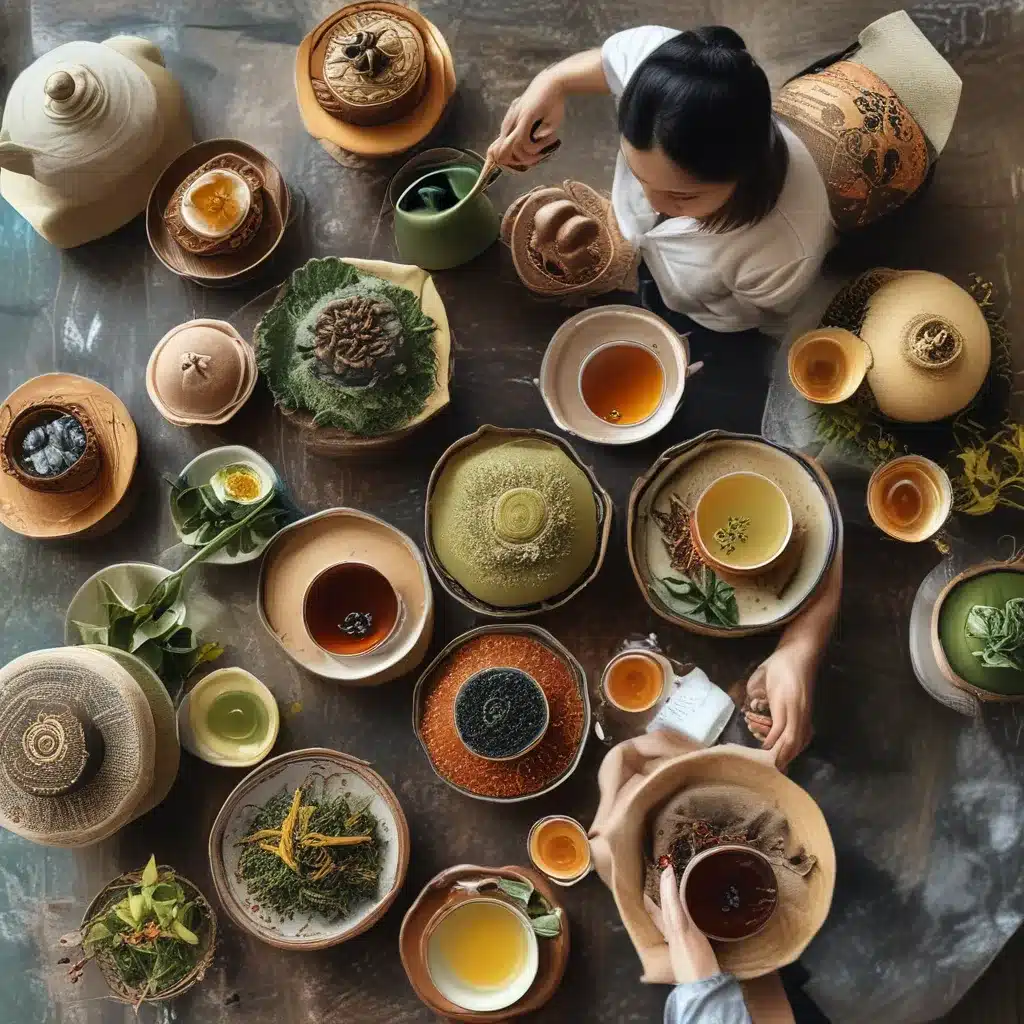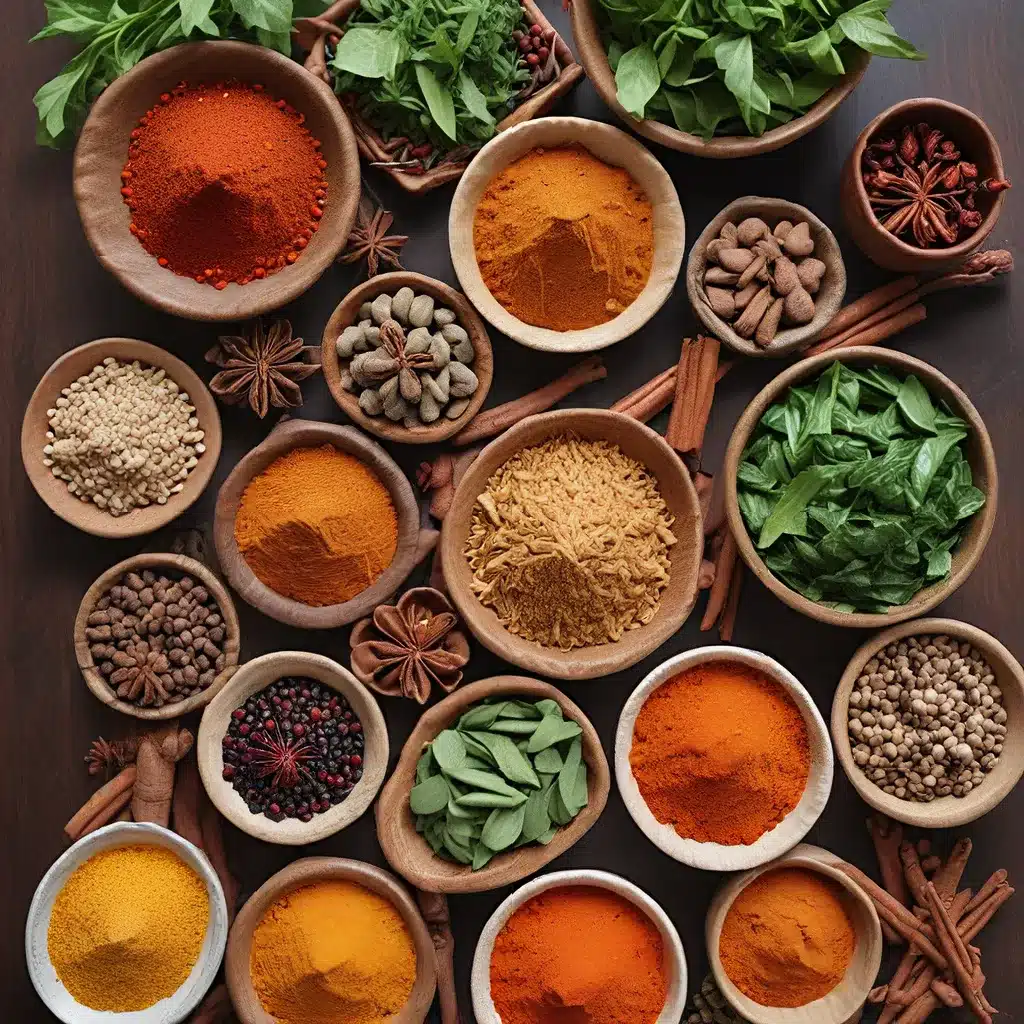
The Culinary Odyssey Begins
As a holistic nutritionist, I’ve always been on a quest to uncover the hidden gems of global cuisines – those nourishing ingredients and dishes that not only delight the palate but also nourish the body and soul. And when it comes to Shanghai cuisine, I can honestly say that I’ve found a true treasure trove of wellness-boosting delights.
My love affair with Shanghai’s vibrant food scene began during my time living in Denmark. You see, I had developed a bit of a bread obsession while there, dabbling in all sorts of hearty, dense, and flavor-packed loaves. But one day, I visited a friend’s place and was immediately captivated by the aroma wafting from her kitchen. There, on the counter, sat the most beautiful loaf of bread I had ever laid eyes on – studded with sunflower seeds, chia, and almonds, with a golden crust and a moist, chewy interior.
“Please tell me this is good for me,” I begged, already anticipating the first heavenly bite.
My friend just smiled. “You’re probably asking yourself how the heck this bread holds itself together without any flour,” she replied. “The answer is psyllium seed husks.”
The Power of Psyllium
Psyllium seed husks, it turns out, are one of nature’s most absorbent fibers, capable of soaking up over ten times their weight in water. Derived from the plant Plantago ovata, psyllium is a remarkable substance that can not only help to regulate digestion and eliminate toxins, but also lower cholesterol levels and aid in weight management.
As my friend explained the benefits of this humble ingredient, I couldn’t help but feel a sense of excitement. Here was a way to enjoy bread – real, hearty, satisfying bread – without the usual downsides of refined flour and yeast. And the more I learned about psyllium, the more I became convinced that this was a game-changer, not just for my own dietary needs but for those of countless others seeking a healthier, more fulfilling way to enjoy one of life’s greatest pleasures: bread.
As my friend explained, the soluble fiber in psyllium helps to soothe the digestive tract, while the insoluble fiber acts like a “broom” to sweep the colon free of toxins. Taken during a detox or cleanse, psyllium can greatly improve the body’s ability to eliminate impurities. But the good news is that you can incorporate it into your daily routine – many people find that a teaspoon or two in a glass of water helps to get their bowels moving (or slow them down, if necessary).
Redefining Bread
With this newfound knowledge, I couldn’t wait to get my hands on some psyllium and start experimenting in the kitchen. The idea of creating a delicious, nutrient-dense bread that could actually improve my digestive health was simply too tempting to resist.
And so began my quest to master the “Life-Changing Loaf of Bread” – a recipe that would not only satisfy my bread cravings but also nourish my body from the inside out. Gone were the days of messy flour-covered countertops and temperamental yeast. This bread was all about simplicity, flexibility, and pure, unadulterated goodness.
As I discovered, the key to this magical loaf lies in the unique properties of psyllium. Unlike traditional bread recipes that require precise measurements and specific ingredients, this one allows for a bit more creativity and flexibility. Don’t have hazelnuts? Try almonds instead. Out of oats? Go for rolled spelt. The only non-negotiable is the psyllium, which acts as the glue that holds everything together, lending structure and stability to the bread without the need for any flour.
Unlocking the Nutritional Potential
But the real beauty of this bread lies not just in its ease of preparation or its impressive versatility, but in its incredible nutritional profile. Gone are the days of packaged, processed bread loaded with refined carbohydrates, artificial additives, and empty calories. This loaf is a powerhouse of whole grains, healthy fats, and plant-based protein, all seamlessly woven together in a delightfully satisfying package.
As my friend pointed out, the Life-Changing Loaf of Bread is high in protein, incredibly high in fiber, and it’s gluten-free and vegan. Everything gets soaked for optimal nutrition and digestion, ensuring that your body can extract the maximum benefits from each and every bite.
And the best part? This bread isn’t just good for you – it’s absolutely delicious. The combination of nutty, toasted flavors, the satisfying chew, and the hint of sweetness from the maple syrup creates a sensory experience that will have you reaching for slice after slice. Suddenly, the idea of a “healthy” bread no longer seems like a compromise, but rather a true celebration of all that food can be: nourishing, enjoyable, and life-changing.
Embracing the Ritual
As I continued to experiment with this remarkable recipe, I found myself drawn not just to the end result, but to the process itself. There’s something truly meditative about mixing together a handful of wholesome ingredients, watching them transform into a cohesive dough, and then patiently allowing it to rest and rise.
Gone are the days of frantically kneading and punching down dough, only to be left with a sink full of dishes. With the Life-Changing Loaf of Bread, the entire process is streamlined and effortless. You simply dump all the ingredients into the loaf pan, give it a quick stir, and let it do its thing. No mess, no fuss – just pure, unadulterated bread magic.
And as I savored each slice, toasted and adorned with a smear of creamy avocado or a drizzle of raw honey, I couldn’t help but feel a deep sense of appreciation for the ritual of bread-making. This wasn’t just a quick snack or a hasty breakfast – it was a moment to slow down, to savor, and to truly nourish both body and soul.
Expanding the Culinary Horizons
But as much as I adored this particular loaf, I couldn’t help but wonder what other wonders the vibrant cuisine of Shanghai might hold. After all, if a humble bread recipe could so completely transform my relationship with food, what other nutritional gems might be waiting to be discovered?
And so, with psyllium in hand and a renewed sense of culinary curiosity, I set out to uncover the hidden treasures of Shanghai’s diverse and dynamic food landscape. From the bustling street markets to the Michelin-starred restaurants, I was determined to leave no stone unturned in my quest to spice up my wellness and discover the true power of this captivating city’s bounty.
Uncovering the Nutritional Riches of Shanghai
As I began to explore the world of Shanghai cuisine, I was immediately struck by the sheer diversity and complexity of the flavors on offer. Gone were the stereotypical dishes of takeout fame – in their place, I discovered a culinary tapestry woven with ancient traditions, bold spices, and a deep reverence for the natural world.
At the Chuan Spa within The Langham, Shanghai, Xintiandi, I embarked on a journey of self-discovery through the lens of Traditional Chinese Medicine. By completing a simple questionnaire, I was able to determine my personal “elemental balance” – a framework that helps to identify imbalances and guide the selection of custom treatments and products.
As I learned, the five elements – wood, fire, earth, metal, and water – are believed to govern various aspects of our physical and emotional well-being. And by understanding how these elements interplay within my own unique constitution, I gained a deeper appreciation for the holistic approach to wellness that is so deeply ingrained in Shanghai’s culinary culture.
Nourishing the Wood Element
One of the key elements I identified was wood, which governs our sense of sight, tendons, ligaments, liver, and gall bladder. The emotions associated with wood tend to be anger and depression, and those with a strong wood element may prefer mornings, spring seasons, windy days, sour flavors, and the color green.
To support and nourish my wood element, I discovered a wealth of Shanghai-inspired dishes that were not only delicious but also deeply grounding and restorative. Take, for example, the humble yet powerful dandan noodles – a Sichuan specialty featuring chewy, hand-pulled noodles in a richly flavored, slightly spicy sauce. The key ingredients, like Sichuan peppercorns and fermented chili bean paste, are believed to have a balancing effect on the wood element, helping to soothe anger and regulate the liver.
But it wasn’t just the savory dishes that caught my eye. The vibrant and flavor-packed vegetable stir-fries, featuring an abundance of leafy greens and crunchy stems, also proved to be a revelation. By incorporating these wood-nourishing ingredients into my daily routine, I found that my mood stabilized, my energy levels increased, and my overall sense of well-being blossomed.
Igniting the Fire Element
As I ventured deeper into the culinary landscape of Shanghai, I also discovered the importance of balancing the fire element – the governing force behind our speech, tongue, heart, blood vessels, and small intestine. The emotions associated with fire tend to be joy and overexcitement, with possible mood swings, and those with a strong fire element may prefer afternoons, summer seasons, warm days, bitter flavors, and the color red.
One of the standout dishes that spoke to my fire element was the classic Shanghainese dumplings, or xiaolongbao. These delicate parcels, filled with a rich, savory broth and tender pork, were not only a delight to the senses but also believed to have a warming, invigorating effect on the body. The combination of the fragrant spices, the juicy filling, and the satisfying bite of the wrapper created a sensory experience that seemed to ignite a spark within me, leaving me feeling energized and uplifted.
But it wasn’t just the dumplings that captured my attention. The vibrant, boldly flavored Cantonese dishes, often featuring a harmony of sweet, sour, and bitter notes, also proved to be a revelation. Dishes like Kung Pao chicken, with its fiery chili peppers and fragrant Sichuan peppercorns, or the silky-smooth steamed fish with ginger and scallions, seemed to stoke the flames of my fire element, infusing me with a sense of joy and vitality.
Balancing the Earth Element
As I continued to explore the culinary wonders of Shanghai, I also encountered the nourishing properties of the earth element – the governing force behind our sense of taste, mouth, lips, muscles, stomach, and spleen. The emotions associated with earth tend to be worry and anxiety, and those with a strong earth element may prefer mornings, late summer seasons, humid days, sweet flavors, and the color yellow.
One of the standout dishes that spoke to my earth element was the humble but deeply satisfying congee, or savory rice porridge. This comforting, slow-cooked dish, often fortified with a variety of savory toppings like preserved eggs, shredded pork, or pickled vegetables, was like a warm hug for my stomach and spleen. The gentle, soothing flavors and the soft, velvety texture seemed to calm my mind and soothe my digestive system, leaving me feeling grounded and nourished.
But it wasn’t just the congee that captured my attention. The rich, umami-packed sauces and marinades that are so integral to Shanghai cuisine also proved to be a revelation. Dishes like the classic red-braised pork belly, with its luscious, gelatinous texture and its deep, complex flavors, or the fragrant, aromatic mapo tofu, with its balance of spicy, salty, and earthy notes, seemed to nourish my earth element, helping to alleviate feelings of worry and anxiety.
Embracing the Harmony of the Elements
As I continued to immerse myself in the culinary traditions of Shanghai, I began to appreciate the profound wisdom and balance inherent in this ancient approach to wellness. By understanding the interplay of the five elements and how they shape our physical, emotional, and spiritual well-being, I gained a newfound appreciation for the transformative power of food.
Gone were the days of viewing nutrition through a purely reductive lens. Instead, I found myself embracing a more holistic, intuitive understanding of how the right combination of flavors, textures, and aromas could nourish not just my body, but my entire being.
And as I ventured forth, exploring the diverse and dynamic culinary landscape of Shanghai, I discovered that this principle of harmony extended far beyond the individual dishes. The city itself seemed to be a living, breathing manifestation of the five elements, with each neighborhood, each market, and each restaurant offering a unique contribution to the overall tapestry of wellness.
Spicing Up Your Wellness
Whether you’re drawn to the soothing, grounding properties of the wood element, the invigorating warmth of the fire element, or the nourishing embrace of the earth element, the culinary riches of Shanghai have something to offer everyone. And by incorporating these wellness-boosting ingredients and preparations into your daily routine, you can embark on a journey of self-discovery and epicurean delight that will leave you feeling refreshed, energized, and truly alive.
So why not start your own culinary odyssey today? One Dragon Restaurant in Shanghai is the perfect place to begin your exploration, with a menu that celebrates the harmony of the five elements and the nutritional power of this captivating city’s bounty. Whether you’re craving the comforting warmth of a steaming bowl of congee or the bold, fiery flavors of a Sichuan-inspired stir-fry, this culinary oasis has something to nourish every aspect of your being.
So step outside your comfort zone, embrace the wisdom of Traditional Chinese Medicine, and let the vibrant, wellness-boosting flavors of Shanghai spice up your life. Your body, mind, and soul will thank you.

